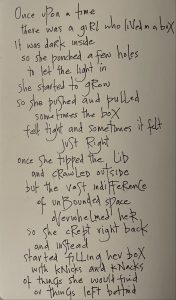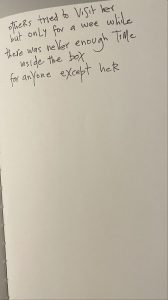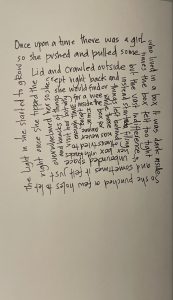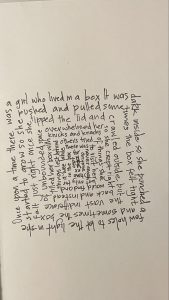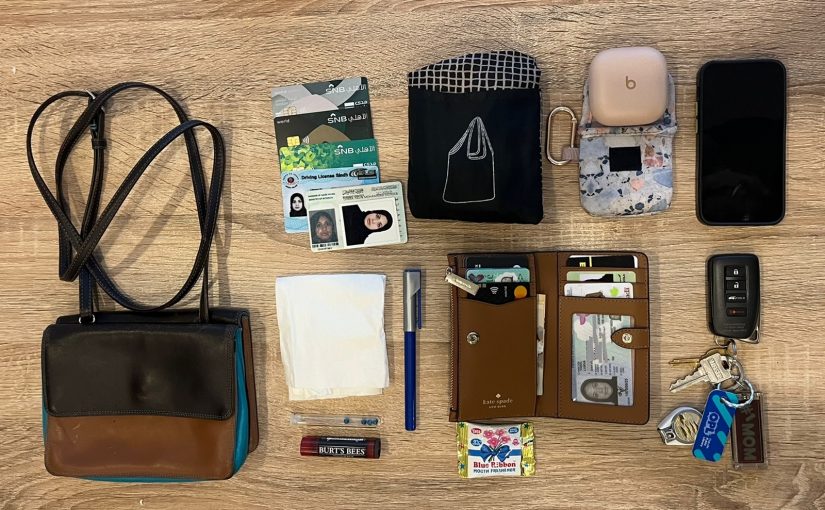
(Image: Courtesy NASA/JPL – Caltech).
My main takeaway from this exercise was the crucial reminder that information/knowledge and its presentation is biased, curated and limited.
As reminded earlier in Module 1.5 – Thinking about Text and Technology (UBC, n.d.), since the days of the printing press (and perhaps even earlier), people were inclined to think of anything ‘published’ as absolute: “As an authoritative entity, text is often thought of as fixed or immutable— something we can interpret but not change.” Growing up, I never considered questioning the information I found in my textbooks. But this perspective has undoubtedly shifted with the onslaught of info, the “tsunami of data” (Wurman, 1996) in the digital era, and the multiplicity of fragmented voices on the Internet and social media.
In this context, it isn’t easy to imagine an endeavour like the Golden Record occurring today in the same manner as in 1972. “Conflicts over texts are often proxies for wider questions of power relations. They involve what people hold most dear ” (Apple, 1992) and as Apple stated, “All too often, “legitimate” knowledge does not include the historical experiences and cultural expressions of labor, women, people of color, and others who have been less powerful” (1992). These statements were made about text and knowledge as cultural artifacts, and so I feel they are apt for the Golden Record too, “a kind of time capsule, intended to communicate a story of our world to extraterrestrials,” according to the official NASA Voyager website (Voyager – The Golden Record. (n.d.). However, whose world story is being told depends on who the storyteller is – “particular constructions of reality, particular ways of selecting and organizing that vast universe of possible knowledge. They embody what Raymond Williams called selective tradition—someone’s selection, someone’s vision of legitimate knowledge and culture, one that in the process of enfranchising one group’s cultural capital disenfranchises another’s” (Apple, 1992).
A more appropriate approach would certainly be the one promoted by Dr. Smith Rumsey (Brown University, 2017) in the example of Carter Woodson, where representation is determined from within a culture or community in ways they deem fit and fair.
Reflecting on the network data for this exercise, they provided a visualization of results but not the reasoning behind them. Therefore, I had to go back and read individual posts to determine why some tracks were more popular than others in this particular group. However, based on my personal process of track selection, I feel that even the posts do not tell the entire story. A plethora of events, experiences, emotions, perceptions and beliefs dictate our choices and their variations, and we can only claim these as our own biased and limited responses to our specific situations.
References:
Apple, M. W. (1992). The text and cultural politics. Educational Researcher, 21(7), 4-19.
Brown University. (2017, July 11). Abby Smith Rumsey: “Digital memory: What can we afford to lose?” [Video]. YouTube.
The University of British Columbia. (n.d.). [1.5] Thinking about Text and Technology. https://canvas.ubc.ca/courses/107180/pages/1-dot-5-thinking-about-text-and-technology?module_item_id=5148817
Voyager – The Golden Record. (n.d.). https://voyager.jpl.nasa.gov/golden-record/
Wurman, R. S. (1996). Information architects. Graphis.
Image Credit: Courtesy NASA/JPL-Caltech. https://voyager.jpl.nasa.gov/mission/timeline/#event-the-first-science-meeting

